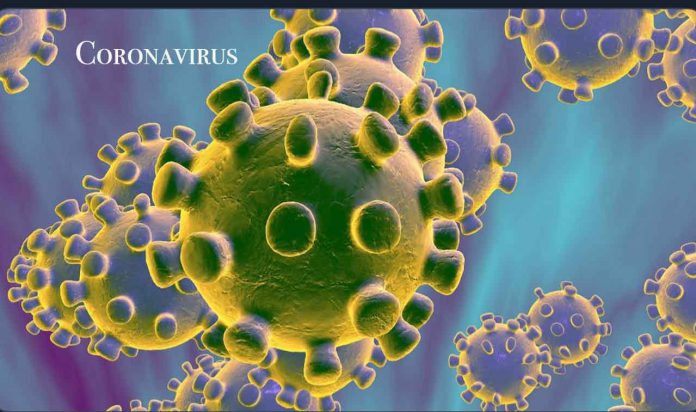The Second Wave of COVID-19 lockdowns in Colombia’s capital is hurting the poor the most
By Anastasia Moloney
BOGOTA – (Thomson Reuters Foundation) – Street vendor Angel Torres was starting to see the light at the end of the tunnel as Colombia’s capital Bogota eased four-months of coronavirus restrictions which had left his family hungry.
But the income from his job selling face masks is now in jeopardy due to a second lockdown imposed on many of the city’s poorest neighborhoods amid a surge in new infections.
“Unless I can… persuade the police at the roadblocks to let me through to work, we don’t have another option but to eat less,” said the 53-year-old who provides for his elderly mother, sick sister, wife and two teenage children.
“I don’t know how we’ll survive if I can’t earn any money,” said Torres, who settled in a hillside slum in south Bogota after being displaced by Colombia’s civil war in 2001.
Attempts to stem the spread of COVID-19 in Latin American cities from Bogota to Panama have exposed disparities between men and women and the gradual re-shutting down of certain city districts is showing the profound ways in which different neighbourhoods delineate wealth and opportunity.
With Bogota’s hospitals overwhelmed and a predicted coronavirus peak in mid-August, the city’s mayor, Claudia Lopez, has imposed a renewed lockdown in parts of the capital with the highest infection rates that are mostly home to the city’s poor.
Torres who lives in Usme – a slum crammed with shacks built from brick, wood and scrap metal – is one of eight districts that have gone under quarantine.
The measures will affect the lives of about 2.3 million people in a city of 8 million.
Another four neighborhoods are set to begin lockdown on July 27 and a final three enter quarantine on Aug. 10.

Bogota is a city starkly divided by the rich neighbourhoods of apartment blocks and gated communities of the north and the hillside slums of the south and west.
Most of the areas facing renewed quarantine are home to slum dwellers and the city’s most vulnerable, including Venezuelan migrants and hundreds and thousands of families displaced during Colombia’s 52-year war that ended in 2016.
Some districts being locked down are home to pockets of the middle class and wealthy.
In poor neighbourhoods, many cannot afford to stay at home. They are part of a vast informal economy made up of cleaners, maids, street sellers and builders who rely on daily cash-in-hand earnings to buy food and pay rent.
Residents in quarantined districts are being ordered to be at home from 8 p.m. until 5 a.m., and only one person per household can go shopping within the neighborhood for essentials each day.
Across Bogota, movement is also restricted based on citizens’ ID card numbers and wearing face masks is mandatory for all outside their homes.
Hundreds of police officers have been deployed across the quarantined districts, closing off neighborhoods by setting up check points, barricades and yellow tape.
“The quarantine was done by sectors to minimize the economic impact,” mayor Lopez told local media this week, who enjoys approval ratings of nearly 70%.
Small businesses, including hair salons, internet cafes and car repair shops, which had reopened a few weeks ago have closed their shutters once again.
In Santa Fe, Bogota’s red-light district, armed military police wearing white protective clothing now stand on quiet street corners instead of sex workers.

Across Colombia, at least 5,500 people have died from COVID-19 and 155,000 cases have been reported. Neighbouring Brazil, the world’s No. 2 coronavirus hot spot after the United States, has registered at least 1.8 million confirmed cases.
In Bogota, nearly 50,000 people have tested positive for COVID-19, stretching hospitals to the limit where intensive care units have reached 90% capacity, health authority figures show.
Yet in Bogota’s affluent northern neighborhoods where the rich and middle class live in apartment blocks and gated communities with guards outside, COVID-19 infection and community transmission rates tend to be low and daily life has largely been unaffected by the new lockdown measures.
Yet poor neighborhoods and sprawling slums have become COVID-19 hotspots due to a lack of access to sanitation and healthcare services and poor nutrition while cramped housing makes social distancing almost impossible.

To help the city’s poorest, Mayor Lopez has pledged government aid to 700,000 residents living in freshly quarantined areas, of which 550,000 people will receive a one-time cash transfer of about $70 – equivalent to about a quarter of the minimum monthly wage – while the remainder will get food parcels.
Sandra Reyes, who lives in the northwestern district of Suba, worries how she will put food on the table when her neighborhood goes into full lockdown in four weeks’ time.
Since she lost her job as an office cleaner due to the pandemic in April, she has been taking two buses involving a 90-minute ride with her young daughter and nephew to reach a rich neighborhood where she begs at traffic lights.
“I didn’t have to beg before. Now I do. I rely on people to give me anything – clothes, food and coins,” the 32-year-old said.
“I don’t know what I’ll do when the new quarantine starts. I’ll have to save some food now. I’m taking it day by day. I pray to God for this to end,” Reyes said.
(Reporting by Anastasia Moloney; Editing by Tom Finn. The Thomson Reuters Foundation)







